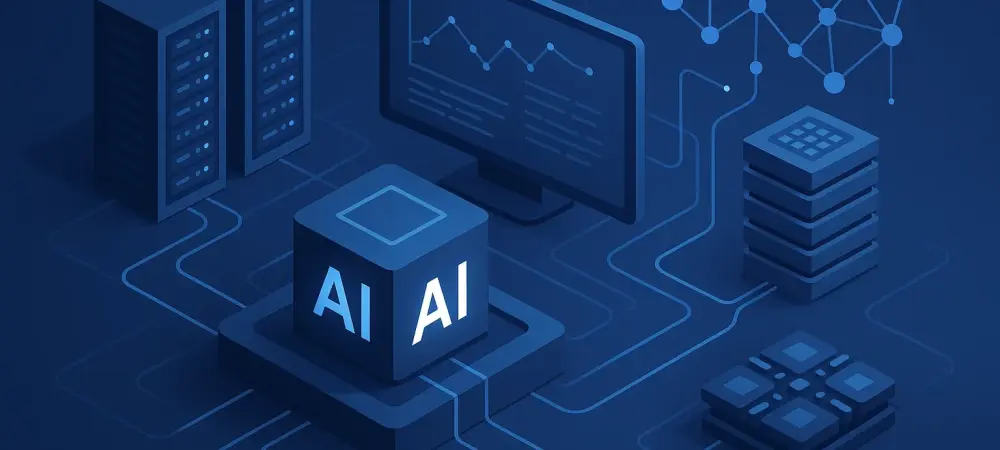Artificial intelligence has rapidly progressed, with advancements in models and algorithms captivating both the general public and professionals. However, an essential component of AI systems often gets overshadowed in these discussions: the role of robust infrastructure. This foundational infrastructure is vital in determining the performance and success of AI when applied in practical scenarios. As the spotlight shines brightly on algorithmic breakthroughs, the foundational infrastructure that supports these systems deserves equal, if not more, attention. This infrastructure not only serves as the backbone of AI models but also plays a decisive role in ensuring their effectiveness and reliability under real-world conditions.
Defining Infrastructure in AI
The Foundations of AI Systems
In the AI realm, infrastructure encompasses the backend systems and procedural frameworks that support models, ensuring their resilience and efficiency. These systems are vital for managing data flow, processing, storage, and ensuring that AI systems can scale and adapt to varying workloads. Effective infrastructure must handle tasks such as queue management, failure recovery, and latency optimization to maintain the smooth functioning of AI models.
Despite strong performance in controlled settings, models often falter when exposed to the unpredictable and dynamic nature of real-world environments. This is attributed to infrastructures that are either inadequate or inefficient, leading to performance issues like latency spikes and system downtimes. Thus, recognizing and building robust infrastructures is a prerequisite to transitioning AI from demonstration phases to widespread real-world application.
The Challenges of Operational Maturity
While AI models continue to receive significant attention for their algorithmic capabilities, there is frequently a mismatch between this focus and the operational maturity necessary for sustained success. In an industry that prioritizes innovation, the readiness of systems to handle operational demands is sometimes overlooked. Without the supporting infrastructure, any breakthroughs in model accuracy remain theoretical and impractical once diversified realities set in. This mismatch underscores the need for a shift from a model-centric perspective to a robust infrastructure-first approach. By closing this gap, AI models can not only achieve the expected accuracy and innovation but also perform reliably and effectively in diverse, real-world scenarios. Prioritizing infrastructure readiness supports the transition from theoretical to practical application and addresses any unforeseen challenges that might arise.
The Impact of Ignoring Infrastructure
Pitfalls in AI Platforms
The importance of infrastructure becomes evident when examining why AI platforms sometimes fall short. Many failures stem not from flaws in AI models but from negligence in infrastructure planning. Unforeseen spikes in demand, bottlenecks in data processing, and region-specific service outages often reveal infrastructure limitations. These gaps can lead to significant hindrances to AI performance, frustrating users and slowing adoption. For AI initiatives to be successful, it is essential that infrastructural planning is not just a second thought. Thorough preparation, including understanding underlying architecture, anticipating demand growth, and preparing for service disruptions, can prevent many pitfalls. Moreover, a focus on infrastructure helps ensure AI systems remain intact and operational even amid failures, ultimately reinforcing trust in AI solutions.
Asynchronous Systems as a Solution
In addressing infrastructure challenges, asynchronous systems emerge as a particularly effective solution. These systems, characterized by non-blocking and event-driven architectures, offer resilience and flexibility required in AI infrastructures. They effectively handle unpredictability, absorbing partial failures, which often enables systems to continue operating smoothly without the need for constant human intervention.
Asynchronous architectures also support higher scalability, allowing AI systems to deal with fluctuating demands more efficiently. More importantly, they allow continuous operations even under stress conditions, ensuring uninterrupted performances needed in mission-critical operations. By shifting toward asynchronous systems, organizations can enhance the efficiency and reliability of their AI infrastructures, thereby ensuring more adaptable and durable AI applications.
Rethinking AI Success
Evaluating Infrastructure Metrics
There is an increasing call to revisit how AI success is evaluated, incorporating infrastructure-related metrics alongside traditional benchmarks for models. Traditional evaluation focuses heavily on accuracy and algorithmic improvement; however, introducing metrics for infrastructure performance, such as serving latency or failure recovery, can provide a more comprehensive understanding of system efficacy. This holistic approach encourages improvements not solely in AI models but in the environments that house them.
Incorporating metrics involving infrastructure will provide organizations a clearer view of how well systems perform under stress conditions and in unpredictable scenarios. It transforms conventional notions of what constitutes AI success and nudges industries closer to recognizing the true foundation of effective intelligence delivery.
Innovation Beyond Algorithms
Throughout the evolution of AI technologies, innovation has been largely perceived as the domain of algorithmic advancement. Yet, as AI systems become foundational in sectors like healthcare, finance, and many more, there is a growing recognition that infrastructure strategy must be a core aspect of this innovative landscape. Infrastructure should not be relegated to just a supporting role; it should be seen as a critical component driving the potential of AI systems. Advancing infrastructure expands the horizons of what AI can achieve, allowing systems to deploy successfully, respond to challenges, and provide sustained impact without buckling under operational demands. This model of infrastructure-first innovation is gradually being accepted as integral to AI’s long-term viability and utility.
The Path Forward for AI Development
Unified Strategy for Real-World Success
The view that infrastructure holds the keys to AI’s real-world performance is gaining traction, calling for a strategic reevaluation across organizations. Given the pivotal role that backend architecture plays, stakeholders such as engineers, evaluators, and industry leaders must collaborate to prioritize infrastructure in the same way they do algorithmic advancements. This forward-thinking strategy is poised to reshape the landscape of AI development.
Through such an inclusive approach, the future of AI holds the promise of scalable, reliable, and efficient systems that can better serve a broad array of applications. Without this, AI may remain impressive in isolated settings, yet impractical when faced with expansive and practical challenges that lie ahead.

